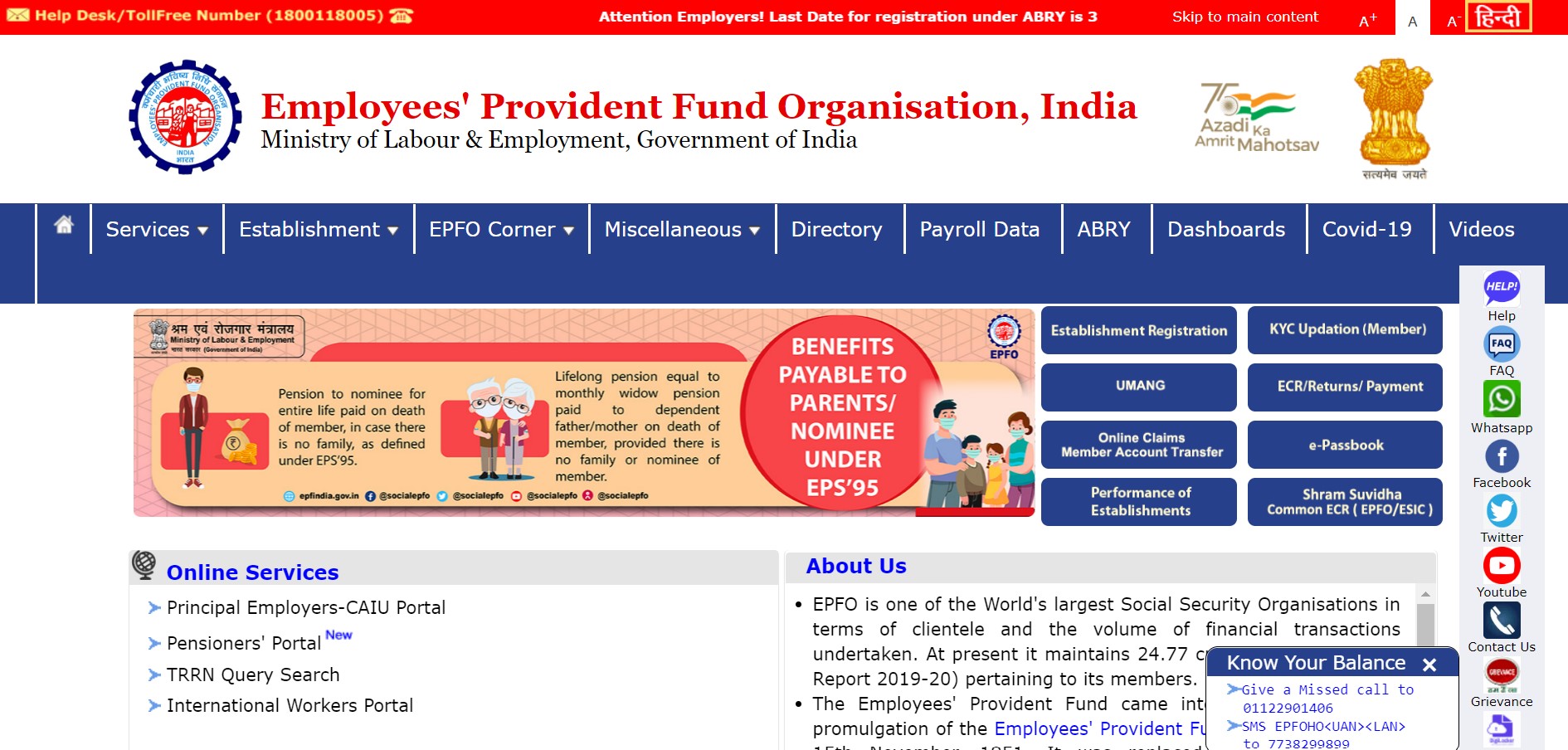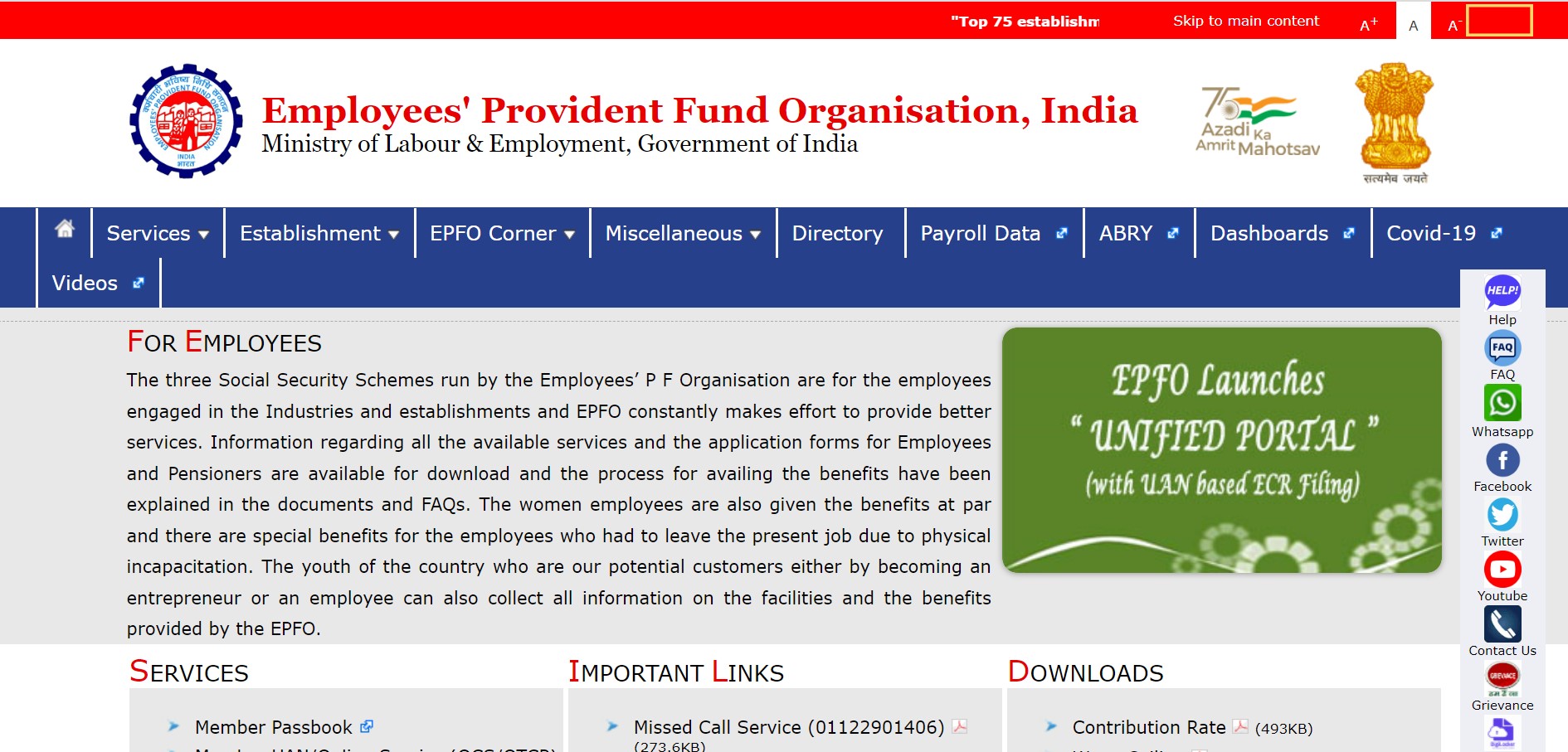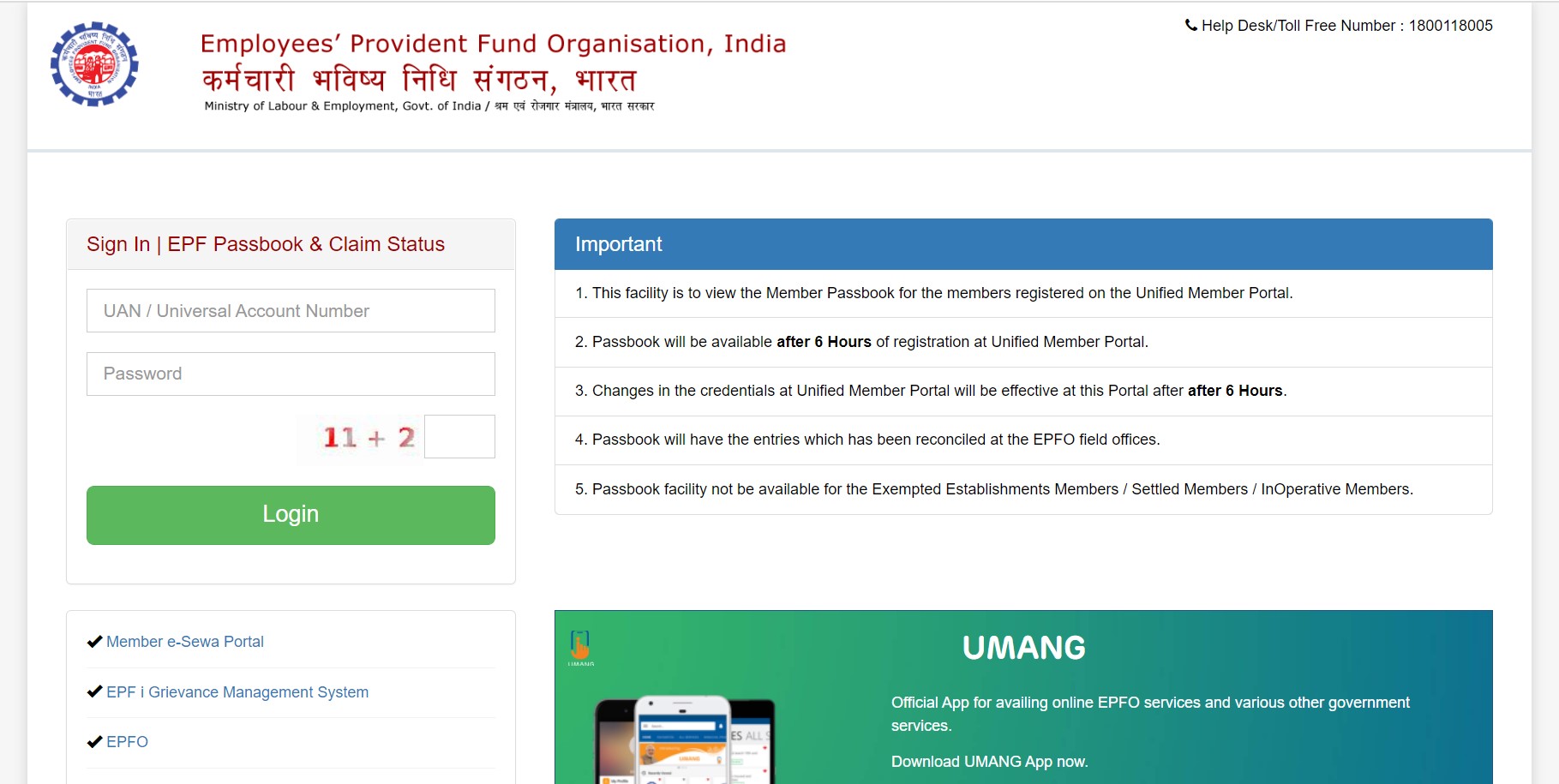General Provident Fund (GPF) 101: Guidelines, Interest Rate, How to Open an Account and Withdrawal Rules

If you are a Government employee, you can open a General Provident Fund (GFP) account. It is one of the three types of Provident Fund account – Public Provident Fund (PPF), General Provident Fund (GPF) and Employees Provident Fund (EPF). However, the terms and conditions, interest rates and rules of these three may vary.
So, how is GFP different from EPF and PPF? What is the interest rate of GPF? How to open a GPF account? And, what are the GPF withdrawal rules? Read on to find out!
What is General Provident Fund (GPF)?
General Provident Fund is a type of Public Provident Fund (PPF) account beneficial for every government employee. It enables government individuals to preserve a part of their salary in the General Provident Fund. The entire amount collected throughout the employment period is paid when the employee retires.
Characteristics of General Provident Fund
General Provident Fund facilitates government employees in many ways. Some of their essential features are:
- General Provident Fund can be given to any salaried individual.
- This scheme is controlled under the Ministry of Personnel, Public Pensions and Grievances by the Department of Pension and Pensioner’s Welfare.
- The individual is not required to submit any document while withdrawing the amount at the time of retirement.
- The department will offer a written document regarding immediate payment of the General Provident Fund money just after an individual’s retirement.
- A nominee is paid an extra amount at the time of death of the subscriber as per the guidelines of the General Provident Fund. However, this added amount should not be more than Rs. 60,000.
- After withdrawing, the money can be returned in small instalments each month towards the fund after withdrawing it.
- A subscriber has to mention the name of a nominee (family member) in the form while taking General Provident Fund.
- At present, the GPF interest rate of 7.10% is offered.
Guidelines and Rules of General Provident Fund
A person desiring to open a General Provident Fund account must go through these vital guidelines. They are:
- Subscribers are not allowed to contribute more than their income to the General Provident Fund account.
- A subscriber can mention more than one person as a nominee, but his/her GPF details must be cleared while signing the form.
- A person involved in services for at least a decade will be able to withdraw the preserved money before retirement.
- Anyone desirous to buy a new home or for loan repayment purposes can withdraw 75% of the GPF amount.
- The amount saved in the General Provident Fund account will mature at the time of the subscriber’s retirement.
Interest rates for General Provident Fund
The interest rate of the General Provident Fund varies from year to year. The following table shows rates of interest over the last 5 years:
| Financial Year | Interest Rate |
| 2017-2018 | 7.9% (April 2017-June 2017) 7.8% (July 2017-September 2017) 7.8% (September 2017-December 2017) 7.6% (January 2018-March 2018) |
| 2018-2019 | 7.6% (April 2018-September 2018) 6% (October 2018-March 2019) |
| 2019-2020 | 8% (April 2019-June 2019) 7.9% (July 2019-March 2020) |
| 2020-2021 | 7.10% |
| 2021-2022 | 7.10% |
Conditions for General Provident Fund
An individual who has met all of these following conditions is suitable for opening a General Provident Fund account:
- Must be an Indian resident beside a government employee.
- Government employees associated with a particular salary class are eligible for General Provident Fund.
- Employees associated with a private organisation are not eligible for General Provident Fund.
- The eligible employees must keep a certain part of their salary for becoming a GPF member.
How to Open a General Provident Fund Account?
Anyone can open a GPF account effortlessly. The Accountant General (AG) office is in charge of this account. Firstly, the person desiring to open an account has to fill up a specified form and submit it to the AG office. Later on, the office will provide them with their account number.
The office will further inform them about their monthly salary deductions to (Drawing and Disbursing Officer) DDO. Moreover, a statement of debits and credits, a GPF balance sheet, and accrued interest are sent to the employee at the end of the financial year.
How to Withdraw Money from a General Provident Fund?
The employees are free to apply to withdraw money from GPF online. This money will be credited to their respective bank accounts without any hassle. Furthermore, government employees can take away their money based on their years of service under the renewed provisions. This process will not require any further approval.
How to Check General Provident Fund Statement?
Here are some following steps you should follow while checking your GPF statement online:
- Visit EPFO Official Website
Visit the official website of EPFO and go to its homepage.

- Click on ‘Services’
On top menu bar, click on the tab ‘Services’. A dropdown menu will appear.
- Click on ‘For Employees’
From the dropdown menu, click on ‘For Employees’.

- Select ‘Member Passbook’
Scroll down. Under the ‘Services’ category, select ‘Member Passbook’. You will be directed to a new page.
- Enter Your Login Details
Enter your UAN and password.

Now, you can see your PF account’s details. You can either download the GPF status or simply view it.
Also Read: Tax Implications Of Provident Fund & How To Save Tax
Difference between General Provident Fund (GPF) and Employee Provident Fund (EPF)
The main differences between General Provident Fund and Employees’ Provident Fund are as follows:
| Aspects | GPF | EPF |
| Interest rate | 7.1% | 8.1% |
| Eligibility | Only government employees are eligible. | Only private sector employees are eligible. |
| Period of maturity | At the time of retirement | Up to the age of 58 years |
| Early cessation | On leaving the government job. | If unemployed for 2 months. |
| Limit of deposit | Minimum deposit amount should be 6% of the employee’s salary. | Minimum deposit amount should be 12% of the employee’s salary. |
Also Read: What Is A Voluntary Provident Fund And How Is It Different from EPF And PPF?
Final Word
GPF is a beneficial savings scheme organised by the Government for government employees. There is no telling when an individual will require money. So, it is better to stay in a safe zone. GPF helps employees accomplish their financial goals. It can be for family emergencies, marriage or even medical purposes.
FAQs on GPF
Ans: The full form of GPF is General Provident Fund.
Ans: Interest received during GPF is entirely tax-free and, no tax is imposed while withdrawing it.
Ans: General Provident Fund deducts 6% money from the basic salary of an individual.
Ans: An extra sum of money is added to the amount and credited to the account of his/her nominee.
Ans: No. Because the General Provident Fund scheme is only for the government employees.
Personal Loan in Your City

Customer’s Feedback
No comments found.Types of Fixed Deposit in 2023 – Know Different Types of FDs and How to Choose
Fixed deposits (FDs) are a popular investment option offered by banks and other financial instituti... Read More »10 Best National Pension Schemes (NPS) in India in April 2023
National Pension Scheme (NPS) is a retirement benefits scheme launched by the Government of India f... Read More »National Pension Scheme (NPS) – How to Open NPS Account?
National Pension Scheme or NPS is a voluntary contribution-based retirement benefits scheme introdu... Read More »How to Open an NPS Account Online and Offline?
National Pension Scheme The National Pension Scheme (NPS) is a voluntary retirement savings sche... Read More »Mahila Samman Savings Certificate Scheme -Interest Rate, Benefits and Eligibility
The Mahila Samman Savings Certificates, a fixed-income investment programme explicitly launched for... Read More »What is a Tax Saving FD – Interest Rates, Benefits, Features and Calculation
Did you know that tax-saving FDs (fixed deposit) can help you save up to Rs.46,800 on taxes? Consid... Read More »What is Fixed Deposit – Best FD Interest Rates, Calculations and How to Apply Online
Fixed deposits (FDs) are known to offer guaranteed returns - one of the reasons why they are so pop... Read More »EPF Interest Rate 2023 – 8.15% FY 2022-23
The Employee Provident Fund (EPF) is a Government-backed retirement savings scheme directed towards... Read More »12 Best Investment Plans in India in April 2023 – Returns & Benefits
Working extra hard to earn money? Great! But, how about making your money work as well? Yes, we are... Read More »Sukanya Samriddhi Yojana: Bank Interest Rates and How to Open a SSY Account
Honourable Prime Minister Narendra Modi launched SSY (full form - Sukanya Samriddhi Yojana) as an i... Read More »Senior Citizen Savings Scheme (SCSS) – Interest Rate 2023
The Senior Citizen Savings Scheme is a government savings scheme launched for the senior citizens o... Read More »List of GST State Codes and Jurisdiction 2023
What is the GST State Code? GST state code is the first two digits of the number on the GS... Read More »Top 10 Chit Fund Schemes in India in 2023
Chit funds are one of the most popular return-generating saving schemes in India. It is a financial... Read More »10 Best Gold ETFs in India to Invest in April 2023
Gold ETFs or Gold Exchange Traded Funds are passively managed funds that track the price of physica... Read More »10 Best Demat Accounts in India for Beginners in 2023
Creation of Demat accounts revolutionised the way trades were conducted at the stock exchanges. It... Read More »20 Best Index Funds to Invest in India in April 2023
What is an Index Fund? An index fund is a type of mutual fund or exchange-traded fund (ETF) that... Read More »Best Arbitrage Mutual Funds to Invest in India in April 2023
Arbitrage funds are hybrid mutual fund schemes that aim to make low-risk profits by buying and sell... Read More »10 Best SIP Plans in India to Invest in April 2023
What is SIP? SIP or Systematic Investment Plan is a method of investing a fixed amount in ... Read More »10 Best Corporate Bond Funds in India to Invest in April 2023
Corporate bond funds are debt funds that invest at least 80% of the investment corpus in companies ... Read More »10 Best Bank for Savings Account in India [Highest Interest Rate 2023]
Savings account is a type of financial instrument offered by several banks. It lets you safely depo... Read More »




















